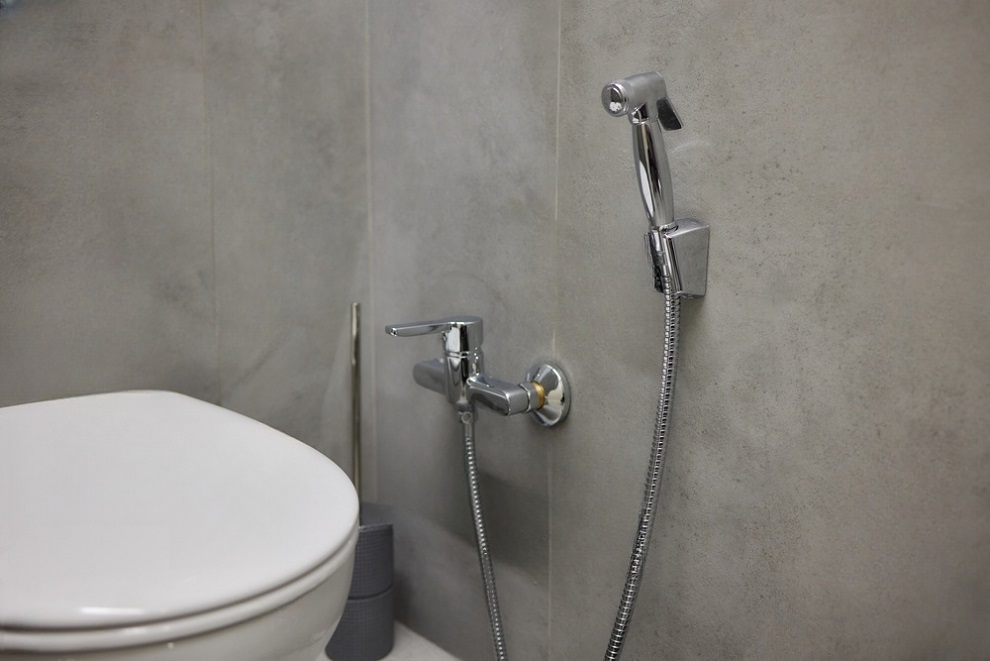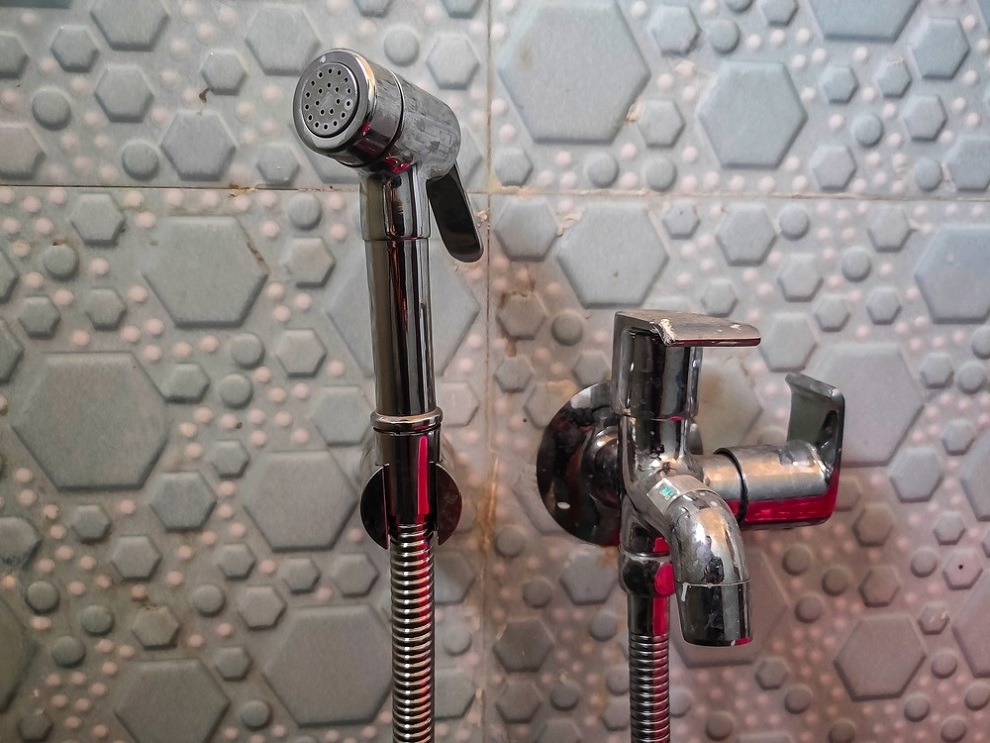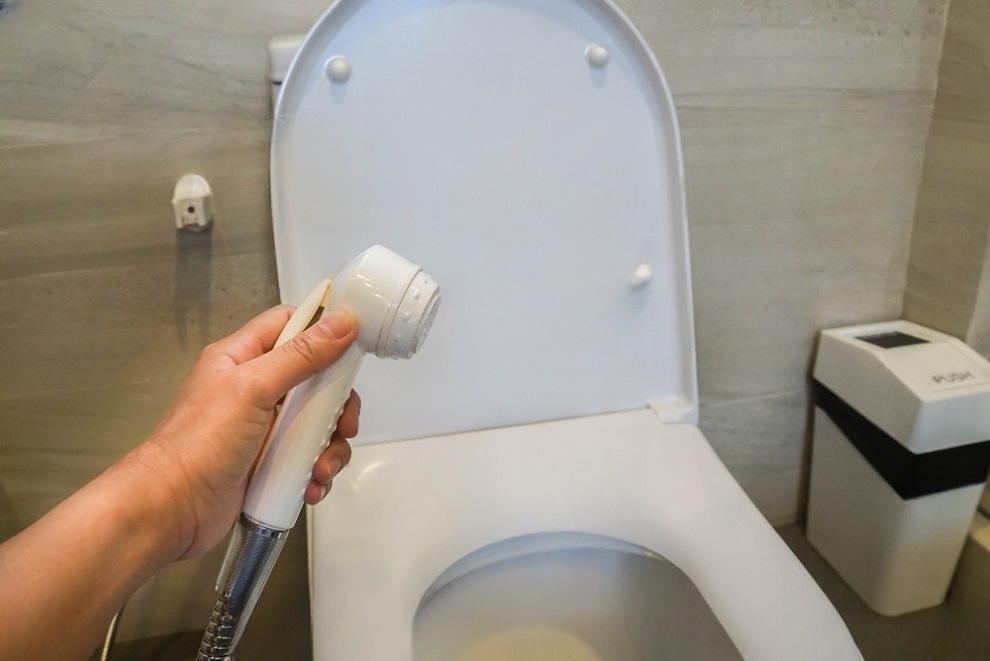Table of Contents
What are the spray toilets called?

The spray toilets that are commonly used for personal hygiene in many Muslim-majority countries and other regions are often referred to as bidets or bidet sprays. They are also known by various other names depending on the cultural context. Some common terms include:
- Shattaf: This term is commonly used in the Middle East and South Asia to describe a handheld bidet spray. The word “shattaf” itself means “to wash” in Arabic.
- Muslim shower: This term is sometimes used to describe the handheld spray attachment used for cleansing after using the toilet. It emphasizes the association of this hygiene practice with Islamic traditions.
- Health faucet: This term is more commonly used in South Asia and India to refer to a handheld water spray device used for personal hygiene.
- Hand bidet: This term refers to a handheld spray device that is used for cleaning oneself after using the toilet. It is a more general term used in various regions.
It is important to note that bidets or bidet sprays can come in different forms and designs. They can be standalone fixtures located next to the toilet, handheld sprays attached to the toilet or nearby wall, or even built-in features integrated into the toilet seat itself. The purpose of these spray toilets is to provide a convenient and hygienic way to cleanse oneself after using the toilet, often in addition to toilet paper.
What is the water spray use in toilet?

In toilets, the water spray you are referring to is commonly known as a bidet or bidet hand spray. It is a plumbing fixture that is primarily used for personal hygiene purposes. The bidet handheld spray typically consists of a nozzle or a small hose attached to the side or back of the toilet bowl.
The main function of the water spray in a toilet is to clean the genital and anal areas after using the toilet. Instead of using toilet paper, the bidet toilet spray provides a more thorough and hygienic cleaning experience. It is particularly useful for individuals who want to maintain cleanliness, improve personal hygiene, or have certain medical conditions that require extra care in that area.
Using a bidet sprayer for toilet is quite simple. After using the toilet, you can activate the spray by turning a knob or pressing a button. This releases a gentle stream of water from the nozzle, which can be adjusted for temperature and pressure in some models. The user can then position themselves appropriately and use the water spray to clean the desired areas. Some bidet sprays also include additional features such as warm water options, air drying, and even heated seats.
The use of bidet sprays offers several advantages. Firstly, they provide a more effective cleaning method compared to toilet paper alone. Water is considered a more thorough and hygienic way to cleanse the area, reducing the risk of irritation, infection, or unpleasant odors. Secondly, bidet sprays are more environmentally friendly as they reduce the consumption of toilet paper, which contributes to deforestation and waste. Moreover, bidet sprays can be beneficial for individuals with mobility issues, disabilities, or conditions that affect their ability to reach and clean themselves adequately.
It’s important to note that bidet sprays are not exclusive to toilets and can be found as standalone fixtures in bathrooms. These standalone bidets resemble a low sink or basin and are used in a similar manner to the spray attachment in a toilet.
In summary, the water spray used in toilets, also known as a bidet spray, is a plumbing fixture designed to provide a more hygienic and thorough cleaning experience after using the toilet. It offers numerous benefits such as improved personal hygiene, reduced environmental impact, and increased accessibility for individuals with specific needs.
What is toilet bowl spray?

Toilet bowl spray, also known as toilet bowl cleaner or toilet cleaner, is a specialized cleaning product designed specifically for maintaining and disinfecting toilets. It is typically formulated with powerful cleaning agents and germ-killing ingredients to effectively remove stains, mineral deposits, and bacteria from the toilet bowl.
The primary purpose of a toilet bowl spray is to provide a convenient and efficient way to clean and sanitize the toilet bowl. It is specifically formulated to target the buildup of dirt, grime, and mineral deposits that can accumulate over time, particularly in hard-to-reach areas such as under the rim and along the waterline. The spray’s consistency allows it to adhere to the surface of the bowl, ensuring proper contact time for effective cleaning.
Toilet bowl sprays often contain chemicals such as bleach, hydrogen peroxide, or other disinfectants that help kill bacteria, viruses, and other harmful microorganisms that can thrive in toilets. These disinfecting agents help eliminate odors and reduce the risk of spreading germs and diseases.
To use a toilet bowl spray, you typically spray the product directly onto the inner surface of the toilet bowl, making sure to cover all areas, including the rim and under the edges. After spraying, you may need to let the product sit for a few minutes to allow it to work effectively. Then, using a toilet brush or scrubber, you can scrub the bowl to loosen any dirt or stains. Finally, flushing the toilet rinses away the residue, leaving the bowl clean and refreshed.
It’s important to follow the instructions provided by the manufacturer when using toilet bowl sprays, as some products may require specific safety precautions or additional steps for optimal results. Additionally, it’s worth noting that toilet bowl sprays are designed for cleaning the toilet bowl itself and should not be used on other surfaces, such as countertops or fixtures, unless explicitly stated by the manufacturer.
Overall, toilet bowl spray is an essential cleaning product that helps maintain proper hygiene and sanitation in the bathroom. Regular use of a toilet bowl spray can keep the toilet bowl clean, fresh-smelling, and free from harmful bacteria, ensuring a more pleasant and healthier bathroom environment.
Where do you spray toilet bidet spray?
A toilet bidet spray, also known as a bidet sprayer or a handheld bidet, is typically used for personal hygiene after using the toilet. It provides a convenient and effective way to clean oneself using water instead of toilet paper. When using a toilet bidet spray, you can direct the spray to different areas for thorough cleaning. Here are the areas where you can spray the toilet bidet spray:
- Genital area: The primary purpose of a bidet spray is to clean the genital area after using the toilet. By aiming the spray at this area, you can ensure a more thorough and hygienic cleaning than using toilet paper alone. The gentle water spray helps remove any residue or bacteria, leaving you feeling clean and refreshed.
- Perineal area: The perineum is the area between the genitals and the anus. This area can also benefit from the cleansing properties of a bidet spray. By directing the spray towards the perineum, you can effectively cleanse this area, helping to maintain proper hygiene.
- Anal area: The bidet spray can also be used to clean the anal area. This can be particularly beneficial after bowel movements to ensure thorough cleansing. By directing the spray towards the anus, you can effectively remove any fecal matter and bacteria, reducing the risk of infection or irritation.
- Hands: In addition to personal hygiene, a bidet spray can also be used to clean your hands after using the toilet. This is especially useful if you prefer not to touch toilet paper or if you want to ensure your hands are thoroughly clean. Simply aim the spray at your hands and use it as you would a regular faucet.
It’s important to note that the specific usage of a bidet spray may vary depending on personal preference and cultural practices. Some individuals may use it solely for the genital area, while others may use it for a more comprehensive cleaning. It’s always a good idea to follow the manufacturer’s instructions and adjust the water pressure according to your comfort level.
How do toilet bidet sprays work?

Toilet bidet sprays, also known as bidet attachments or bidet sprayers, are devices used for personal hygiene after using the toilet. They provide a gentle and targeted spray of water to clean the genital and anal areas, offering a more thorough and hygienic alternative to using toilet paper alone. Here’s an expanded explanation of how toilet bidet sprays work:
- Installation: Bidet sprays are typically installed near the toilet bowl, either as a standalone unit or as an attachment to the existing toilet. The installation process may involve connecting the bidet spray to the water supply line and adjusting the water pressure settings.
- Water Supply: Bidet sprays are connected to the freshwater supply of the bathroom. Some models may require professional installation, while others can be easily installed by the user with the help of installation kits and instructions provided by the manufacturer.
- Controls and Adjustments: Most bidet sprays have user-friendly controls to operate the spray. These controls can vary depending on the model and manufacturer but generally include a lever, dial, or button to activate and control the water flow. Some bidet sprays may also offer additional features like adjustable water pressure, temperature control, and different spray patterns.
- Activation: When a user wants to use the bidet spray, they activate it by using the designated control mechanism. This activates a valve inside the device, allowing the water to flow through the spray nozzle.
- Water Spray: Once activated, the bidet spray emits a focused and gentle stream of water through a nozzle. The nozzle is positioned strategically to target the desired areas for cleansing, typically the genital and anal regions.
- Adjustments and Customization: Depending on the model, users may have the option to adjust the water pressure, temperature, and spray pattern to suit their preferences. This customization allows individuals to find their preferred settings for comfort and cleanliness.
- Cleaning and Drying: After using the bidet spray, some individuals may choose to pat dry with a small amount of toilet paper or use a separate towel. Alternatively, advanced bidet models may include additional features such as air dryers or warm air flow to eliminate the need for toilet paper altogether.
- Maintenance: Bidet sprays usually require minimal maintenance. Regular cleaning of the nozzle and device is recommended to prevent the buildup of mineral deposits or bacteria. Some models may have a self-cleaning function that flushes water through the nozzle to keep it clean and hygienic.
- Hygiene Benefits: The use of bidet sprays offers several hygiene benefits. They provide a more effective and gentle cleansing compared to toilet paper, which can leave residue behind. Bidet sprays are particularly helpful for individuals with sensitive skin, hemorrhoids, or certain medical conditions that require extra care and cleanliness.
It’s important to note that bidet sprays are not meant to replace proper handwashing with soap and water. They are intended as a supplementary cleaning method for personal hygiene.
What can I use instead of toilet bidet spray?
If you’re looking for alternatives to a toilet bidet spray, there are several options available that can help maintain personal hygiene and cleanliness. Here are some alternatives you can consider:
- Bidet Attachments: If you want to replicate the bidet experience without a separate bidet fixture, you can install a bidet attachment on your existing toilet. These attachments typically come in the form of a nozzle or sprayer that connects to the water supply and provides a cleansing spray of water. They are usually affordable, easy to install, and can offer adjustable water pressure and temperature settings.
- Bidet Toilet Seats: Another alternative is a bidet toilet seat, also known as a washlet or smart toilet seat. These seats come with built-in bidet functions and can be installed on most standard toilets. They often provide features like adjustable water temperature, pressure, nozzle position, and even additional functionalities like heated seats, air dryers, and remote controls. Bidet toilet seats offer a more integrated and seamless experience compared to attachments.
- Portable Bidets: If you’re looking for a solution outside of your home, portable bidets can be a viable option. These are small handheld devices that you can fill with water and use for cleaning yourself after using the toilet. They typically have a nozzle or spout that you can direct to the desired area and provide a gentle spray of water. Portable bidets are compact, easy to carry, and can be a convenient choice for travel or when bidet fixtures are not available.
- Wet Wipes or Toilet Paper: While not as effective as a bidet, using wet wipes or toilet paper is a common alternative for cleaning after using the toilet. Wet wipes are pre-moistened and can provide a refreshing and more thorough cleaning compared to dry toilet paper alone. However, it’s important to choose wipes that are specifically labeled as flushable to avoid plumbing issues. If using dry toilet paper, consider using it in larger quantities or folding it multiple times to ensure thorough cleaning.
- Water Containers or Spray Bottles: If you prefer a simple and low-cost solution, you can use a water container or spray bottle filled with water to clean yourself. Pour or spray the water onto toilet paper and use it for cleansing. While this method may not offer the precision and ease of use of a bidet spray, it can still provide some level of cleaning.
Remember that personal hygiene is important, and it’s essential to find a method that works best for you and ensures cleanliness after using the toilet. Each alternative has its pros and cons, so consider your preferences, budget, and availability when choosing the right option for your needs.
Can you make your own toilet bidet spray?

Yes, it is possible to make your own toilet bidet spray, although it may require some DIY skills and access to the necessary materials. A bidet spray, also known as a handheld bidet or a bidet sprayer, is a device that is used to clean oneself after using the toilet. Here’s an expanded answer on how you can create your own toilet bidet spray:
- Gather the materials: To make your own bidet spray, you will need a few key components. These include a handheld sprayer or nozzle, a flexible hose, a T-valve adapter, and a water supply source. You can find these materials at a local hardware store or purchase them online.
- Shut off the water supply: Before you begin the installation process, make sure to shut off the water supply to your toilet. You can usually find a valve located near the base of the toilet. Turning it clockwise will shut off the water flow.
- Install the T-valve adapter: The T-valve adapter allows you to divert water from the toilet’s water supply to the bidet spray. You will need to remove the water supply hose from the toilet tank and attach the T-valve adapter in its place. The T-valve should have two outlets, one for the existing hose and the other for the bidet spray hose.
- Connect the bidet spray hose: Take the flexible hose that came with the bidet spray or purchase one separately if needed. Connect one end of the hose to the T-valve adapter’s outlet designated for the bidet spray.
- Install the handheld sprayer: Attach the other end of the flexible hose to the handheld sprayer or nozzle. This sprayer should have different spray settings to adjust the water pressure according to your preference.
- Check for leaks: Once everything is connected, double-check all the connections for any leaks. Turn on the water supply and observe if there are any drips or water seeping from the connections. Tighten the connections if necessary to eliminate any leaks.
- Test the bidet spray: With the water supply turned on, test the bidet spray by pressing the trigger on the handheld sprayer. Adjust the water pressure and spray settings as needed to achieve the desired effect.
- Make necessary adjustments: If you find that the water pressure is too high or too low, you can make adjustments by using a pressure regulator or adjusting the T-valve adapter. These adjustments will vary depending on the specific components you use for your bidet spray.
Remember to take necessary precautions and ensure that you have a good understanding of your plumbing system before attempting to install a bidet spray. If you are unsure or uncomfortable with DIY installations, it’s advisable to consult a professional plumber who can assist you in the process.
Additionally, it’s important to note that building your own bidet spray may not offer the same level of functionality and features as commercially available bidet attachments or standalone bidet fixtures. These products are specifically designed for hygiene purposes and may provide additional features like temperature control, self-cleaning nozzles, and adjustable spray patterns.
